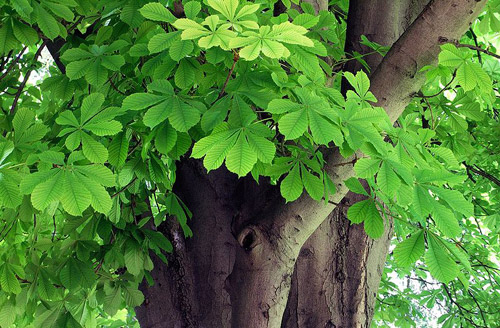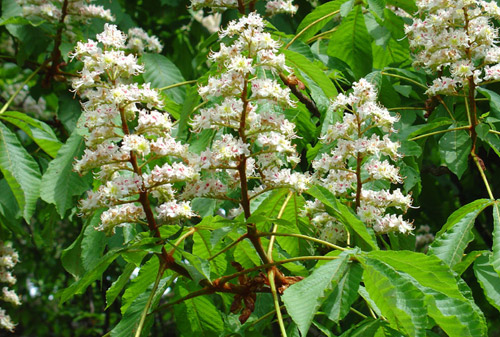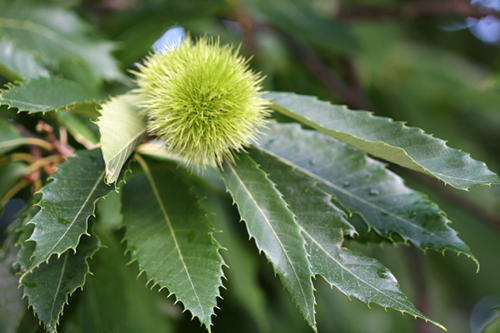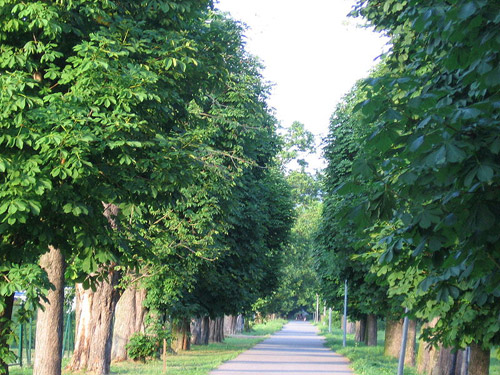A | B | C | D | E | F | G | H | I | J | K | L | M | N | O | P | Q | R | S | T | U | V | W | X | Y | Z

Image from Alvesgaspar
Names
Aesculus hippocastanum, Horse Chestnut
Description
Trees or shrubs, leaves arranged opposite and have leaflets. Flowers are yellowish and cluster at branch ends. Fruit is prickly and contains glossy brown seeds with a pale scar.

Concern Level
Only during drought conditions, unpalatable.
Toxic Parts
Nuts, seedlings, leaves, bark, honey and buds

Symptoms
Colic, diarrhea, depression, dilated pupils, lack of coordination, paralysis, inflammation of mucus membranes.
Danger
Contains glycosides and perhaps a narcotic alkaloid which Can be fatal

Image from Prskavka
More Information
*It should be noted that we are not veterinarians. This information is written specifically for horses and should be used for reference purposes only. If you think your horse has eaten something toxic call your vet right away.
